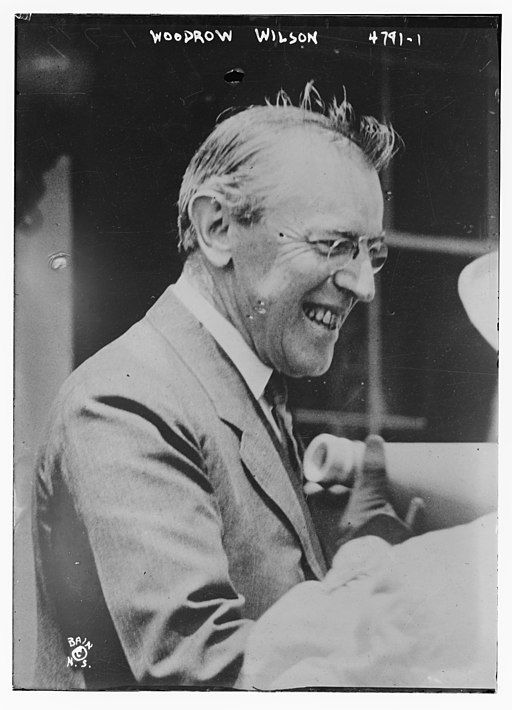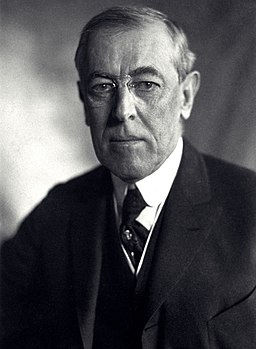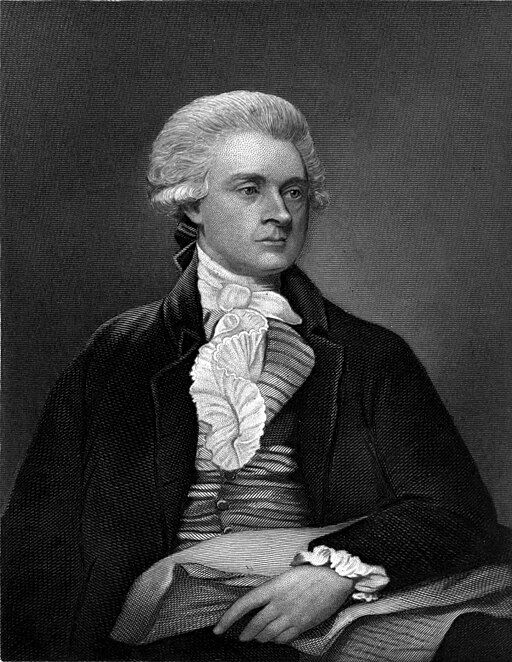Woodrow Wilson and the Administrative State
- Brent Hecht
- Oct 3, 2023
- 6 min read
Updated: Oct 3, 2023
Woodrow Wilson and the Administrative State
Woodrow Wilson was elected president in the election of 1912 and assumed office in March of 1913. On March 4, while Woodrow Wilson was being inaugurated, Wilson's predecessor, William Taft was surprisingly busy, signing the Department of Labor Act which created a new cabinet position inside Woodrow Wilson's administration. Although Wilson wasn't responsible for signing the act, the very day he was inaugurated his administration had become larger than the day before.
Woodrow Wilson is considered by historians to be the father of public administration.1 In 1886, Wilson was attending Johns Hopkins University for his PhD in political science when he wrote an essay that he finished November 4, 1886 titled The Study of Administration.2 Today, many view this moment, when Wilson published his paper, as the moment when public administration became a specific field of study in higher education. Wilson was the first and the last president to hold a PhD. In understanding history, it is important to know that Johns Hopkins University was known for its professors being educated in the tradition of German state theory and philosophy of history.3 A few years later, in 1889, Wilson published a book titled The State: Elements of Historical and Practical Politics where he performed an extensive study of historical governments and provided an outlook on what he believed was the proper function of government.

Wilson's Ideological Desire to Change the Government
Woodrow Wilson was the first United States president to criticize the founding of America "which he did with a root-and-branch thoroughness."4 Of course, historians understand that the founders even disagreed with how America was founded as Hamilton and Jefferson each contended for the America they envisioned with Hamilton backing the Federalist vision and Jefferson supporting the Republican vision. Wilson did not disagree with the Declaration of Independence so much as the idea that these truths which he called "abstract" were universally understood across all space and time as truth.4
In 1911, while Wilson was campaigning, he demonstrated that he believed the Declaration was malleable when he stated,
If you want to understand the real Declaration of Independence, do not read the preface. Every Fourth of July should be a time for examining our standards, our purposes, for determining afresh what principles, what forms of power we think most likely to effect our safety and happiness. That and that alone is the obligation the Declaration lays upon us....grave, thoughtful, perspicacious, and trusted men all around us agree in deriding those "Fourth of July sentiments."5
The founders structured the Constitution and worded the Declaration knowing the fact that human nature does not change. This became a hindrance to what Wilson wanted to achieve as president and tried to convince the public that human nature, rather, could be molded and channeled by the government.6
Justly revered as our great Constitution is, it could be stripped off and thrown aside like a garment, and the nation would still stand forth clothed in the living vestment of flesh and sinew, warm with the heart-blood of one people, ready to recreate constitutions and laws.7
As Wilson became president he hoped that the "government of persons" would be left behind by "the administration of things." Indeed, Wilson hoped to be the president that ushered in what he called the age of administration.8
In 1913, Wilson published a book called The New Freedom which was a collection of his campaign speeches from 1912. This compilation clearly laid out the vision for his coming presidency. These excerpts demonstrate how the corporation had arrived at the focus of policymaking and government.
...for we are conscious that the new order of society has not been made to fit and provide the convenience or prosperity of the average man....that a new nation seems to have been created which the old formulas do not fit or afford a vital interpretation of.9
There was a time when corporations played a very minor part in our business affairs, but now they play the chief part, and most men are the servants of corporations. ...Today, the everyday relationships of men are largely with great impersonal concerns, with organizations, not with individual men. ...There is something very new and very big and very complex about these new relations of capital and labor.10
Here is an excerpt from one of Wilson's closing paragraphs in New Freedom.
...A New Freedom--A Liberty widened and deepened to match the broadened life of man in modern America, restoring to him in very truth the control of his government, throwing wide all gates of lawful enterprise, unfettering his energies, and warming the generous impulses of his heart...11
One of the defining moments in corporate history also happened the same year that Woodrow Wilson wrote his Study of Administration essay in 1886. The Supreme Court Case Santa Clara vs Southern Pacific Railroad, in a unanimous decision handed down on May 10, 1886, granted corporations the rights of personhood under the 14th amendment's equal protection clause.12
Wilson Adding To His Administration
As was already covered, Woodrow Wilson's administration expanded on day one with the Labor Department. In addition to the Labor Department, the IRS was created with the ratification of the 16th amendment on February 3, 1913, just one month before Wilson was inaugurated. Although Wilson was not yet the president when the IRS was created, he had the Treasury Department immediately begin collecting income taxes via the Revenue Act of 1913, (also known as the Underwood-Simmons Tariff Act) which he signed into law on October 3rd.
In his first State of the Union Address on December 2, 1913, Wilson urged congress to pass the Federal Reserve Act so he could sign it into law. This was the first State of the Union Address to be delivered in person since Thomas Jefferson discontinued the practice in 1801.
I turn to matters of domestic concern. You already have under consideration a bill for the reform of our system of banking and currency, for which the country waits with impatience, as for something fundamental to its whole business life and necessary to set credit free from arbitrary and artificial restraints. I need not say how earnestly I hope for its early enactment into law. I take leave to beg that the whole energy and attention of the Senate be concentrated upon it till the matter is successfully disposed of. 13
The Federal Reserve Act was signed into law December 23, 1913, before the month was over.
In 1914, he signed the Federal Trade Commission Act, creating the Federal Trade Commission. He also signed the Smith-Lever Act in 1914, creating the extension service that connected the Federal Government to farmers through the university extension services.
The Bureau of Public Roads was created with the Federal-Aid Roads Act signed on July 11, 1916. The National Defense Act of 1916 brought the military of each individual state under greater control of the president. The president could now mobilize the National Guard for any national emergency.
On August 10, 1917, Wilson created The Food Administration with executive order 2681. This was created in order to administer aid to Europeans in the wake of World War I with Herbert Hoover leading the administration. Fortunately, this organization dissolved in 1920.
The Trading With the Enemy Act of 1917 created the Office of Alien Property Custodian to confiscate and "manage" the property of US enemies during wartime. This act later became used as justification to use emergency measures by Franklin D. Roosevelt during the Great Depression.
These are just a few of the bills passed during Wilson's presidency that enlarged the administration of the Federal Government, with none being as important as how Wilson transformed the financial system. As Woodrow Wilson's presidency came to an end, he held the record as the president to have issued the most executive orders of any president before him. Only one president after him exceeded Wilson in issuing executive orders and that was his Assistant Secretary of the Navy, Franklin D. Roosevelt who was the 32nd president from 1933 to 1945.14

Sources:
Ensure IAS, “Father of Public Administration,” ENSURE IAS, accessed Oct 3, 2023., https://ensureias.com/blog/public-administration/father-of-public-administration#.
Stillman, Richard J. “Woodrow Wilson and the Study of Administration: A New Look at an Old Essay.” The American Political Science Review 67, no. 2 (1973): 582–88. https://doi.org/10.2307/1958787.
Will, George F.. The Conservative Sensibility. United States: Hachette Books, 2019. 75.
Will. The Conservative Sensibility. 68-69.
Will. The Conservative Sensibility. 70.
Will. The Conservative Sensibility. 70.
Will. The Conservative Sensibility. 80.
Will. The Conservative Sensibility. 73.
Wilson, Woodrow., Hale, William Bayard. The New Freedom: A Call for the Emancipation of the Generous Energies of a People. United States: Doubleday, Page, 1918. 4.
Wilson. The New Freedom. 5.
Wilson. The New Freedom. 294.
Oyez. “Santa Clara County v. Southern Pacific Railroad Company.” Accessed October 3, 2023. https://www.oyez.org/cases/1850-1900/118us394.
“First Annual Message | The American Presidency Project,” accessed October 3, 2023, https://www.presidency.ucsb.edu/documents/first-annual-message-18.
“Executive Orders | The American Presidency Project,” accessed Oct. 3, 2023. https://www.presidency.ucsb.edu/statistics/data/executive-orders.
.png)
